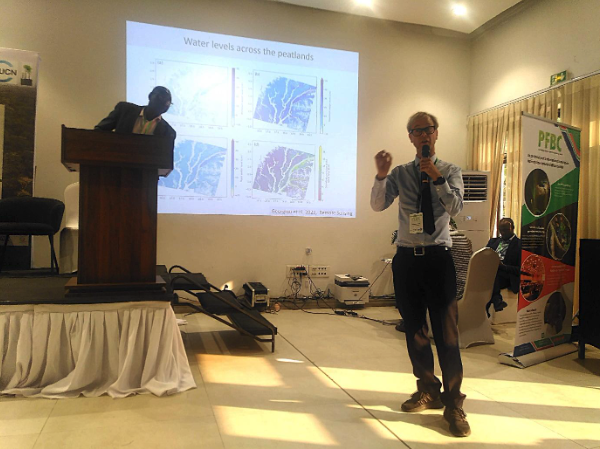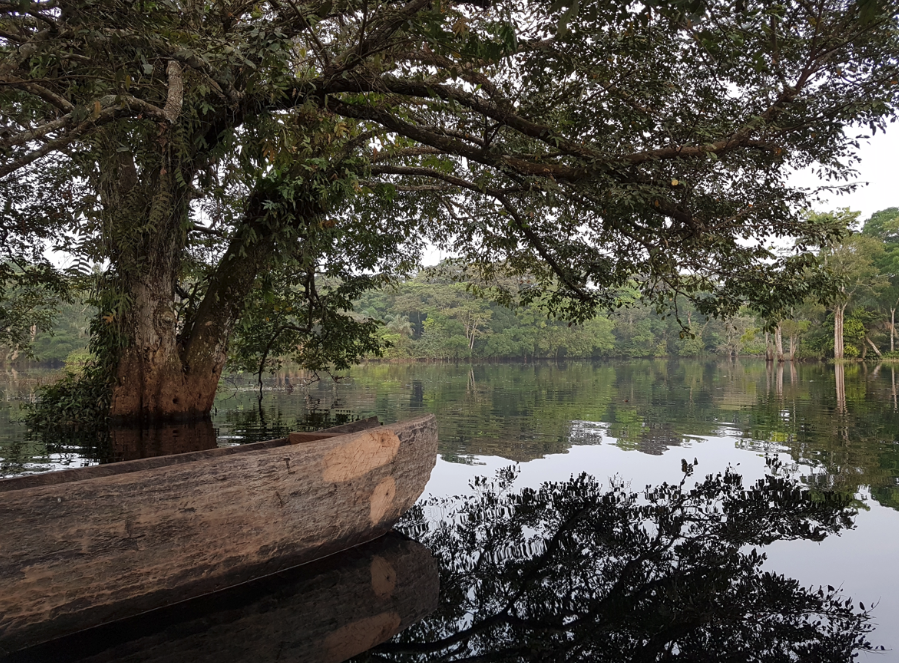
The best of peatland science for the Congo Basin: GPI presents Global Peatlands Assessment at forest partnership conference in Kinshasa
The peatlands of the Congo Basin straddle the Democratic Republic of Congo and the Republic of Congo. They cover an area of approximately 14.6 million hectares making them the largest continuous complex of tropical peatlands. These ecosystems are characterised by their rich biodiversity and high carbon storage capacity, absorbing more carbon from the atmosphere than they release. The Congo Basin’s intact peatlands play an essential role in mitigating climate change and water security risks.

With the recognition of their ecological importance, numerous research studies and investigations are being conducted on peatlands in the region, leading to discussions on how to best manage this ecosystem – including at the 20th Meeting of the Parties (MoP) of the Congo Basin Forest Partnership (CBFP), which took place in Kinshasa, DRC, from the 3rd to 5thJune this year.
The Global Peatlands Initiative (GPI) team co-hosted the side event “Peatlands for life in the Congo Basin: Current and emerging status of knowledge, conservation, challenges, opportunities and ways to integrate peatland considerations into land use planning" together with the UNEP Congo Basin Peatlands Project, the Democratic Republic of the Congo, FAO, CongoPeat – Leeds University, Marien Ngouabi University, Kinsangani University, WRI, WCS and CIFOR. The objective of the session was to provide an overview of the scientific information available to date on the peatlands ecosystem, the challenges they are facing, and the opportunities regarding their management. The partners shared initial reflections on how to facilitate the integration of peatland considerations into the land-use planning processes from local to regional level in the Congo Basin.

Peatlands science from the Global Peatlands Assessment – Africa chapter
UNEP’s Fabrice Inkonkoy, who is leading the GPI, highlighted the close links between peatlands and the cultures and livelihoods of Indigenous Peoples and Local Communities (IPLCs) before presenting the main results of the Global Peatlands Assessment’s (GPA) Africa chapter. As the GPA reveals, 8% of the world’s peatlands are located on the continent – with the Congo Basin alone storing approximately 30,000 Mt of carbon – although they are being damagedat an alarming rate. 12 African countries report that more than half of their peatlands are already degraded. This is principally a result of draining for agricultural uses and urbanisation, and the extraction of peat for use as fuel.To tackle these challenges, the GPA contains a set of recommendations for the conservation, restoration and sustainable management of these essential ecosystems.

Alongside the GPI, the speaker line-up featured a series of leading peatlands experts. Denis Jean Sonwa (CIFOR) reported on the current state of knowledge on peatlands in Central Africa; Prof. Simon Lewis (CongoPeat Project – Leeds University) presented new, augmented data on Central African peatlands; Jean-Jacques Bambuta (Peatlands Management Unit of the DRC’s Ministry for the Environment and Sustainable Development) presented the Congo Basin Peatlands Project; and Dr Landing Mané (OSFAC), Sophie Diron (WCS) and Mackline Mbemba (CIFOR) outlined key steps to integrate peatlands considerations into land use planning. UNEP’s George Neba Akwah (Congo Basin Peatlands Project) concluded to note the significance of peatlands in regional policy, with an active partnership network in place to work on it.

Special status for Congolese peatlands
Reflecting their ecological and cultural importance, peatlands have been the focus of a series of regional initiatives recently, including the Brazzaville Declaration (2018) and the Nile Basin Initiative’s peatlands pathway. In the Declaration of the 2nd Summit of the Three Basins signed in Brazzaville, Republic of Congo on 28 October 2023, the heads of state and governments of the three basins of the Amazon, Congo, and Borneo Mekong Southeast Asia acknowledged the special status and need for protection of these biodiverse ecosystems and tropical forests – large areas of which include peatlands, such as in the Cuvette Centrale basin in the Congos. During the 111th meeting of the Council of Ministers of the Democratic Republic of the Congo's government (Kinshasa, 1 September 2023), the DRC’s President Félix-Antoine Tshisekedi Tshilombo declared again that peatlands must be given special status as a strict conservation zone.
Earlier this year, UNEP’s Congo Basin Peatlands Project organised a field mission to launch a peatlands data campaign and research capacity building in the region.